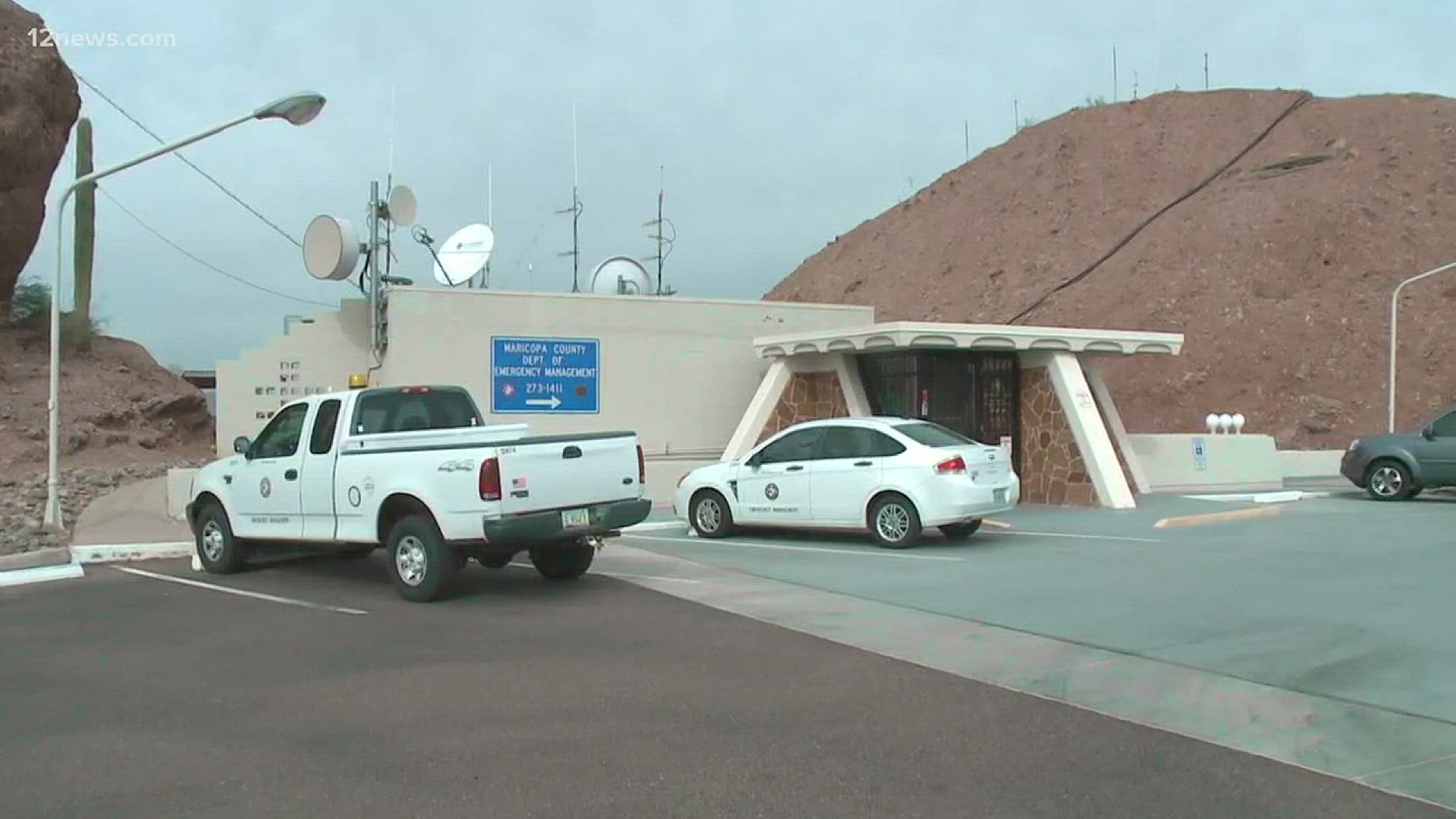PHOENIX – Maricopa County had a handful of fallout shelters in the past, mostly built in the 1950s, but they’ve since been repurposed into office and storage spaces, according to Maricopa County Emergency Management.
In fact, the building the agency used is one of those former bomb shelters, tucked in between rock structures you may pass all the time along McDowell Road—between 52nd and 68th streets—without realizing.
It’s a cool piece of history which still houses some of the shelter's historic artifacts, including a sanitation kit that serves as a toilet, a blast door—even two hallways that have exposed sections of rock from the mountain it sits inside of.
But it means in the event of a nuclear attack, options for Arizonans to take cover are limited.
The Trump administration threatened new sanctions on North Korea on Wednesday after the Kim Jong Un’s military leaders conducted a powerful missile test that some believe could reach the mainland United States, including Washington D.C.
Planning for what you should do after a nuclear attack, if one were to happen near you, should start now, said Mike Winters, the emergency services planner with Maricopa County Emergency Management.
“We really never had a fallout shelter program in our country,” Winters said, citing the country of Switzerland, which is known for many things, including having enough nuclear fallout shelter space for its entire population.
“[Arizona fallout shelters] were taken out because everyone wants more office space,” he said.
So, he wants you to have a kit ready to go now, before it’s too late.
The following is a list of items you may need, according to the American Red Cross:
Water: One gallon per person, per day (3-day supply for evacuation, 2-week supply for home)
Food: Non-perishable, easy-to-prepare items (3-day supply for evacuation, 2-week supply for home)
Flashlight
Battery-powered or hand-crank radio (NOAA weather radio, if possible)
Extra batteries
First aid kit
Medications (7-day supply) and medical items
Multi-purpose tool
Sanitation and personal hygiene items
Copies of personal documents (medication list and pertinent medical information, proof of address, deed/lease to home, passports, birth certificates, insurance policies)
Cell phone with chargers
Family and emergency contact information
Extra cash
Emergency blanket
Map(s) of the area
Consider the needs of all family members and add supplies to your kit.
Suggested items to help meet additional needs are:
Medical supplies (hearing aids with extra batteries, glasses, contact lenses, syringes, etc.)
Baby supplies (bottles, formula, baby food, diapers)
Games and activities for children
Pet supplies (collar, leash, ID, food, carrier, bowl)
Two-way radios
Extra set of car keys and house keys
Manual can opener
Additional supplies to keep at home or in your survival kit based on the types of disasters common to your area:
Whistle
N95 or surgical masks
Matches
Rain gear
Towels
Work gloves
Tools/supplies for securing your home
Extra clothing, hat and sturdy shoes
Plastic sheeting
Duct tape
Scissors
Household liquid bleach
Entertainment items
Blankets or sleeping bags

